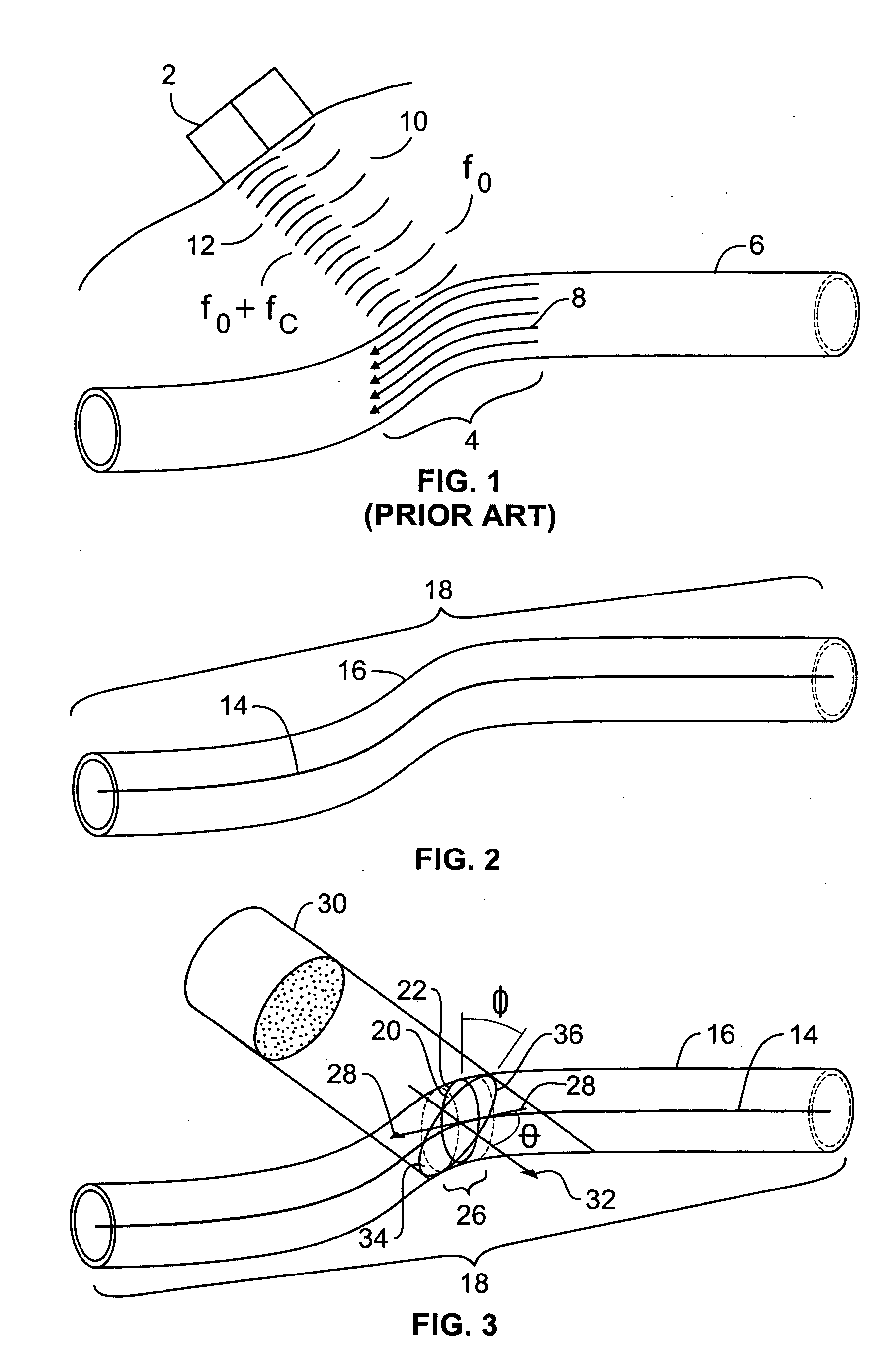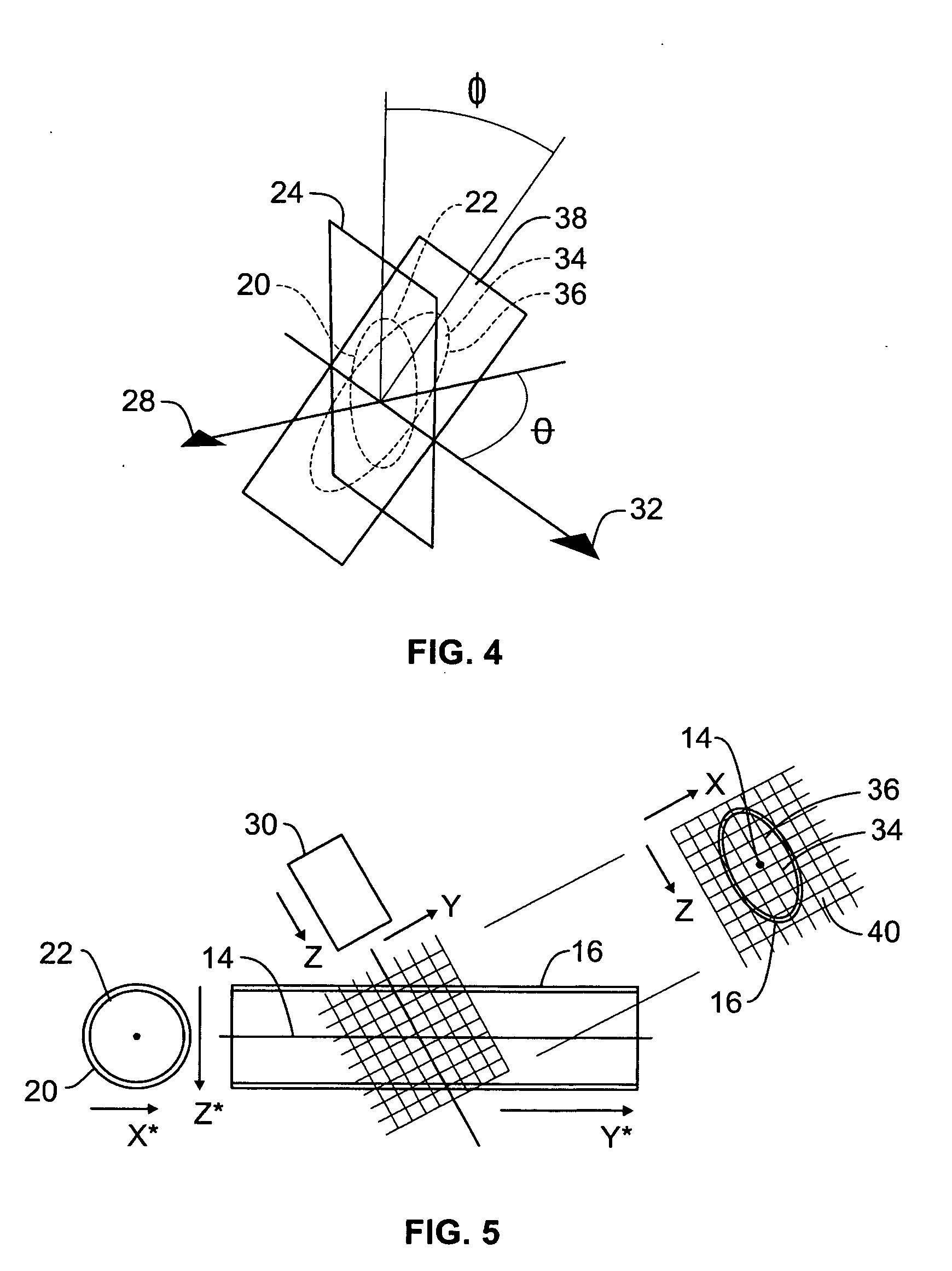Method and apparatus for determining an ultrasound fluid flow centerline
a centerline and ultrasound technology, applied in the field of ultrasonic data processing, can solve the problems of difficult to get a good approximation of the angle using, the true velocity of the ultrasound, and the use of both hands and eyes by the sonographer, so as to achieve the effect of propagating and receiving ultrasound energy
- Summary
- Abstract
- Description
- Claims
- Application Information
AI Technical Summary
Benefits of technology
Problems solved by technology
Method used
Image
Examples
Embodiment Construction
[0027] With reference to FIGS. 2 and 3, a centerline 14 is drawn through a vessel 16 (e.g. a blood vessel) within the body of a living being (e.g. a human) within the field of view 18 of an ultrasound probe (not shown). The centerline 14 is defined as a plurality of statistical “centers” of the vessel 16 throughout the field of view 18. The centerline 14 is derived from measured ultrasound parameters such as 4-D Power Doppler or 4-D color flow data. It can be, for instance, the mean (average), median (central value), or mode (location of maximum) of samples of ultrasound measurements taken over successive cross-sections of areas 20 along the vessel 16. The mean of a dimension x representing the x dimension in the coordinate system of the frame of reference of the ultrasound probe using a(x) as a density of some desirable ultrasound parameter is ∫xa(x)dx, provided that a(x) is normalized so that it integrates to unity. The median is the value x0 such that ∫-∞x0a(x) ⅆx=∫x0∞a(x)...
PUM
 Login to View More
Login to View More Abstract
Description
Claims
Application Information
 Login to View More
Login to View More - R&D
- Intellectual Property
- Life Sciences
- Materials
- Tech Scout
- Unparalleled Data Quality
- Higher Quality Content
- 60% Fewer Hallucinations
Browse by: Latest US Patents, China's latest patents, Technical Efficacy Thesaurus, Application Domain, Technology Topic, Popular Technical Reports.
© 2025 PatSnap. All rights reserved.Legal|Privacy policy|Modern Slavery Act Transparency Statement|Sitemap|About US| Contact US: help@patsnap.com



